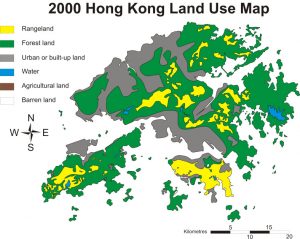Introduction
Hong Kong is home to 7 million people and a highly densely populated city. Due to its mountainous landscape, 40% of land is designated as protected area or national park (Mottershead, 529). Moreover, the infamous Shek Kip Mei fire of 1953 dislocated 53000 people (Wong, 27). Therefore, most parts of the city are made up of 30 stories high residential skyscrapers. Though the population is mainly made up of first and second generation immigrants from China, the city also houses a large community of expatriates and temporary foreign workers such as Caucasians, Filipinos, Indians, and many other ethnicities. With a diverse population, there is a high demand in range and quantity of consumption. In a city with such high consumption power and so little land, its no wonder waste management becomes a huge problem.
As I’ve mentioned, land is a very limited resource in Hong Kong. Ironically, the main waste treatment method for the city is landfills, which would probably be the method that takes up the most space. There are three landfills that support the city right now; South East New Territories Landfill(short for SENT), West New Territories Landfill (short for WENT), and North East New Territories(short for NENT). According to Coconuts HK, our landfills are due to fill up at the end of the decade (Price). Despite the lack of land, the government’s plan to deal with waste management is to extend the current landfills. There have been strong oppositions from the communities around the landfills because there are odour, noise, and water pollution. The landfills themselves are also disrupting the ecosystem and biodiversity in the area. There is increasing pressure and tension between the government and the general public because of the current situation with waste management, and also lacking behind sustainable development despite Hong Kong being a highly international city. Hence, I will discuss the main drivers, environmental and social impacts, states and trends, as well as possible solution for waste management system in Hong Kong.